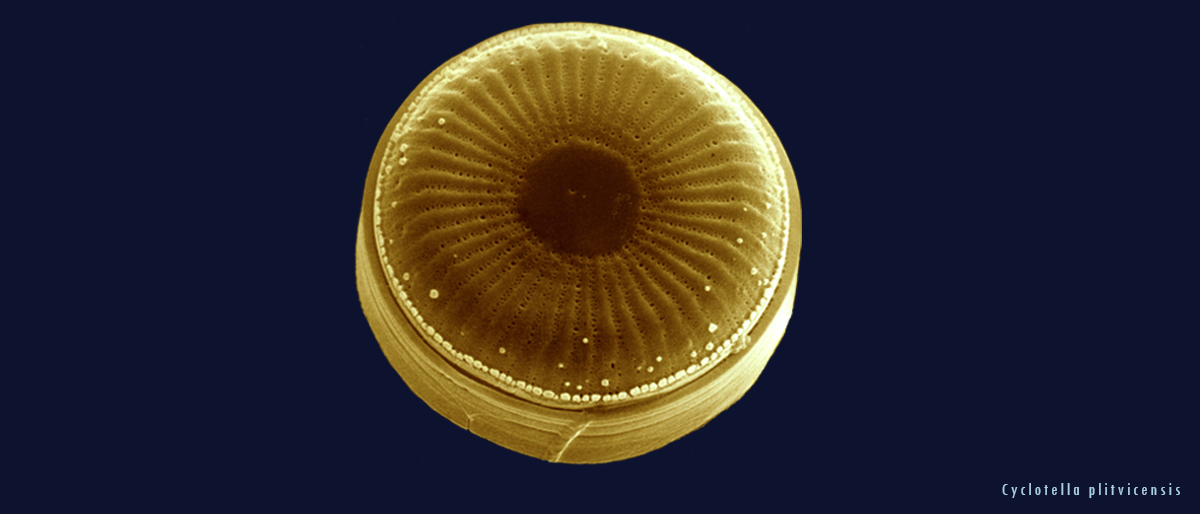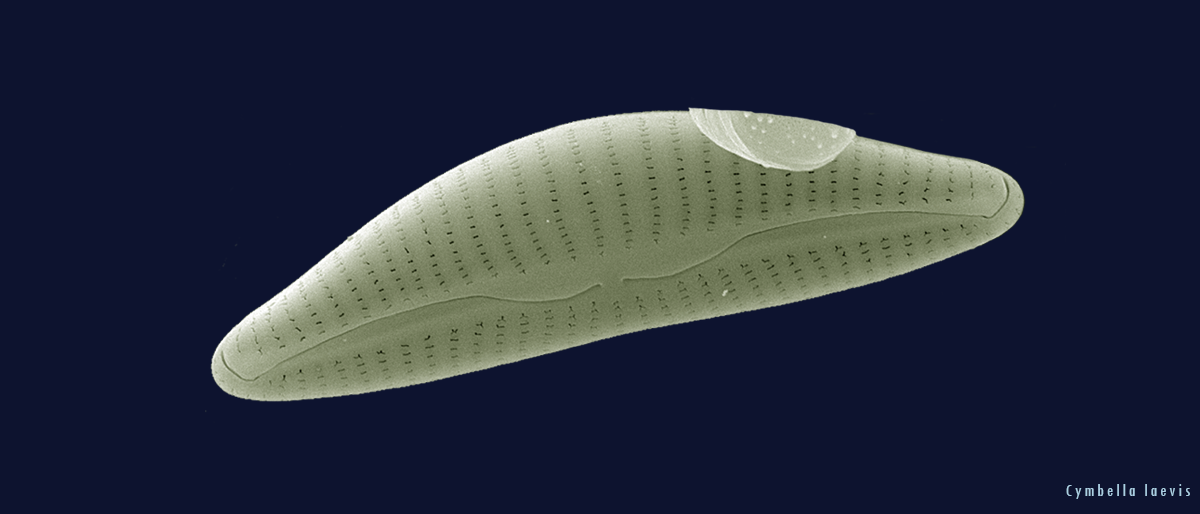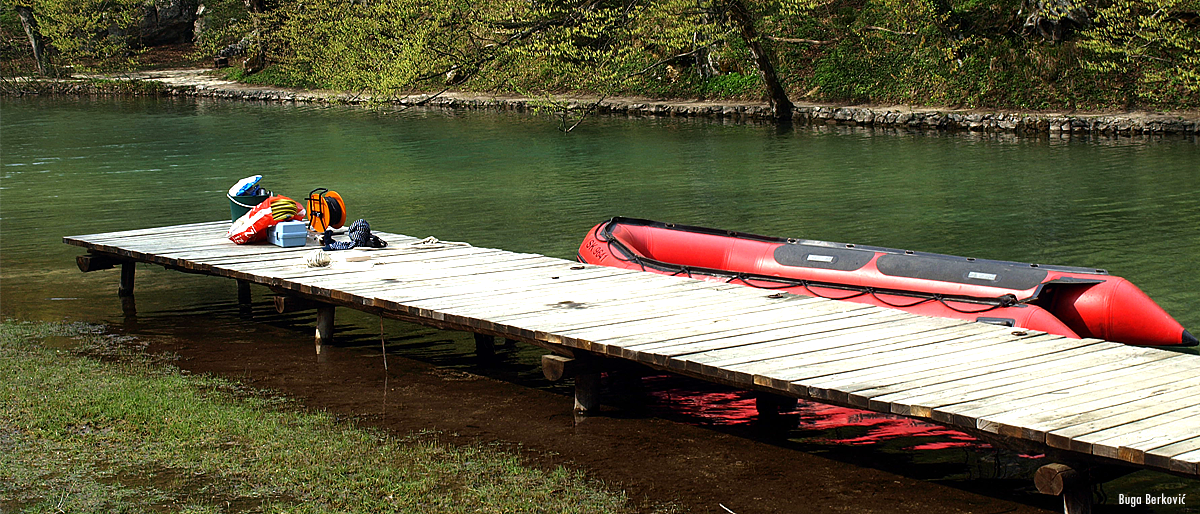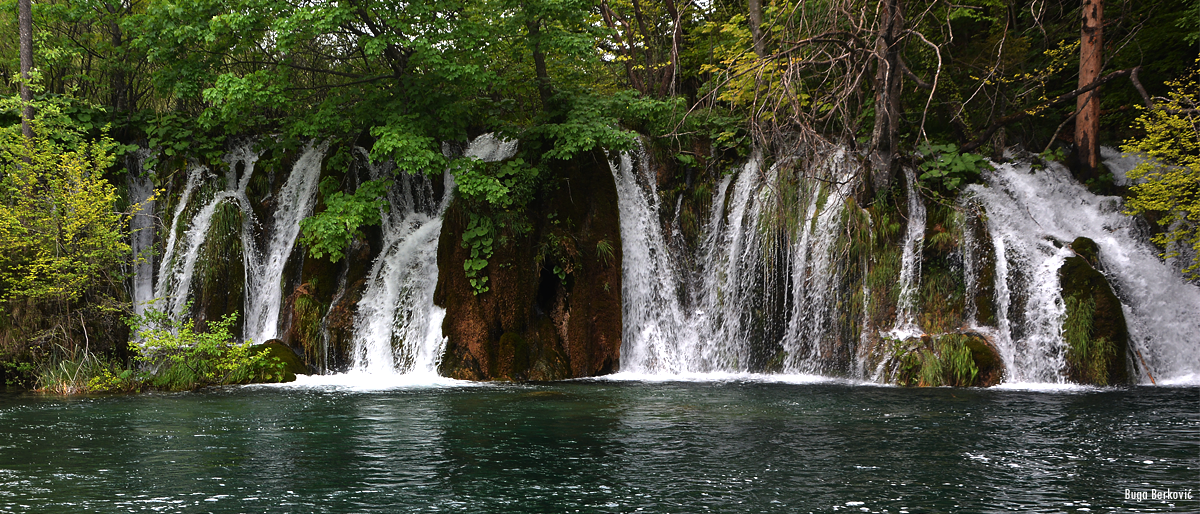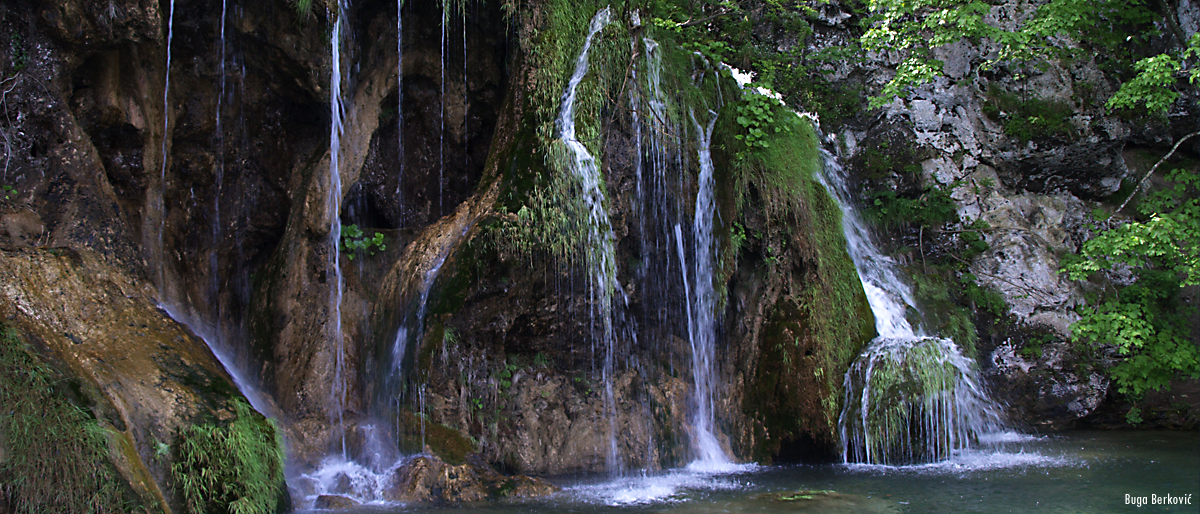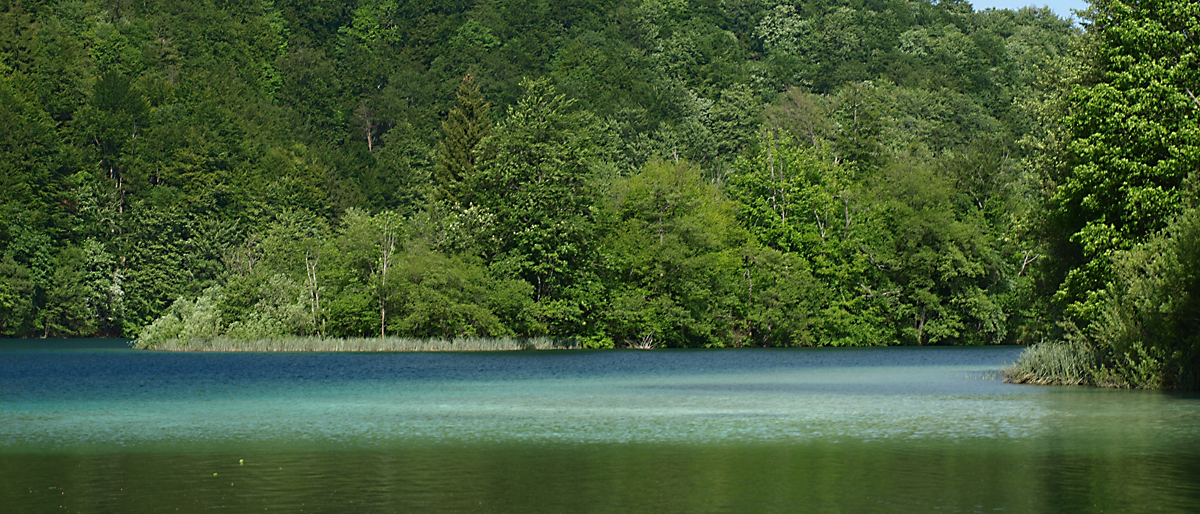Diatoms are microscopic algae, distributed in both fresh water systems and the seas, or any wet areas (found even on the feathers of the aquatic birds) and can accordingly be found both as planktonic and as benthic organisms. They are one of the largest and most important groups of organisms in the Earth, responsible for an estimated 20% of global carbon fixation. Their beautiful geometrical cells have silica enforced cell walls and are in some species round, in others elongated or triangular. These silica shells of diatoms are formed of two halves and are perforated with series of tiny holes which enable water and dissolved matter in it to pass in and out of the cell. (Figure 1.)
Figure 1.
Diatoms are very specific when it comes to the chemistry of waters in which they live. They are limited with the ranges of pH, salinity, nutrients, water turbidity and current velocity of the water body, among others. These variables sometimes reflect also human influences on the diatom habitat so diatoms can be used as indicators of both natural and human induced changes in state of the water body they inhabit.
Previous research revealed some of the diatom species which can be found in the Plitvice lakes system. Among others: Cyclotella plitvicensis, Achnantidium minutissimum, Stephanodiscus neoastraea.
Figure 2.

